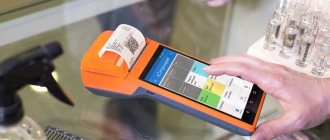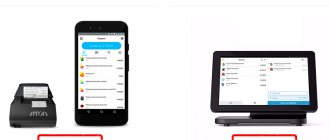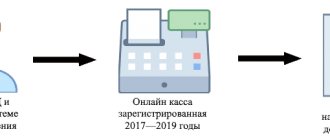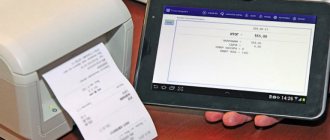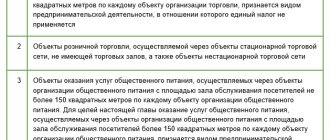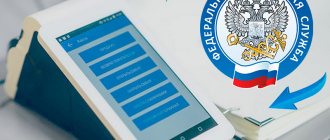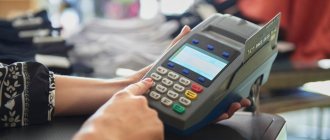From July 1, 2021, entrepreneurs will face a second wave of mandatory cash automation due to changes in Federal Law No. 54. We will tell you in this article who will have to climb its crest, how to understand the financial and technical nuances, and what to look for when choosing an online cash register. Last year, the first wave of mandatory replacement of cash register equipment took place in connection with changes in Federal Law No. 54. Representatives of large and medium-sized retailers were the first to switch to online cash registers. But from July 1, 2021, the second wave of transition to work under 54-FZ is coming. Online cash registers will have to be used by small retailers and entrepreneurs who operate on a patent and UTII. And if large retail was already familiar with cash register automation, but also experienced considerable difficulties at the transition stage, then many patent holders and UTII holders had not previously used fiscal cash registers at all.
So, what do entrepreneurs who are starting to automate their business from scratch need to know?
Cost of automation and compensation from the state
Representatives of micro-businesses, especially on the periphery of our Motherland, are now actively complaining about the lack of finance and technical capabilities to modernize their business.
In this regard, the state has planned compensation for automation costs in the amount of 18 thousand rubles (Federal Law dated November 27, 2017 No. 349-FZ “On Amendments to Part Two of the Tax Code of the Russian Federation”). It is assumed that this money should be enough for the simplest online cash register and fiscal storage device. And nothing more is needed. Let's see if this is true.
To begin with, let’s make a reservation that compensation is made through a tax deduction. The tax deduction is provided for no more than 18,000 rubles for each copy of the cash register. The following are included in the calculation:
- the online cash register itself,
- fiscal storage,
- necessary software,
- works or services for setting up and registering a cash register.
We would like to draw your attention to the fact that if the cash register is registered after the mandatory transition period, there will be no opportunity to receive a tax deduction. And the deadlines for registering cash registers by type of activity are as follows:
- from 02/01/2017 to 07/01/2018 - UTII and Patent: trade and catering (with hired employees).
- from 02/01/2017 to 07/01/2019 - UTII and Patent: trade and catering (without hired employees), as well as services and work.
In accordance with the updated 54-FZ, a business that previously used cash register equipment must use a new model of cash registers with a fiscal drive (FN). The cost of an online cash register with the correct version of FNA now starts at about 14,700 rubles (for example, we took Newger ATOL 91F).
Using online cash registers, it is necessary to generate electronic checks and send them in real time to the tax office through an authorized fiscal data operator (OFD). The OFD service, of course, is not free. The entrepreneur must enter into a mandatory contract with the operator, the cost of which is about 3,000 rubles per year.
Let's move on.
The new model cash registers are called online cash registers for a reason. In accordance with the requirements of the amended 54-FZ, an electronic receipt (EC) must be generated at the time of purchase of goods and sent in real time to the OFD system and (upon request) to the buyer by e-mail or mobile phone. This means that the entrepreneur must resolve the issue of stable wireless communication at the place where the cash register is used.
And if previously the entrepreneur did not feel such a need and there was no Internet access at the outlet, now he will have to organize such access. And these are additional expenses, and are no longer subject to tax compensation.
How to choose
To make the right choice, we recommend taking into account the following nuances:
- The service must actively function in conjunction with any cash register and storage model.
- The cash register must be easy to connect without manual input - this way you can avoid incorrect or duplicate information.
- The ability to quickly pay for services - you need access to payment via bank cards, by invoice, or via electronic money.
- The ability to quickly start the process immediately after paying the amount for the work - no need to wait several days for funds to be credited.
- All options and connection actions are carried out through one website or visit; you do not have to sign up with many different authorities with inconvenient work schedules.
- The operator has the option to connect for a certain agreed period.
- Additional services and features that will help optimize your business and increase profits.
Another important point that needs to be emphasized is the protection of reputation. It is desirable that the activities of the OFD be the main one, and not through intermediaries. This will eliminate the possibility of a fine being assessed for late provision of data on goods sold. The Federal Tax Service will issue penalties to the owner of the company.
To prevent this, you should contact Cleverens. The company's employees will help you understand the types and advise on the choice of equipment. This way, you will be able to avoid doubts and erroneous payments to incompetent companies that only occasionally and ineptly perform the function of the CRF.
Secrets of the right choice
First you need to determine whether the organization you like is an operator. The official list is usually easy to find on the Federal Tax Service website with updates. But if a representative says that they opened recently or are too small to be included in the list, then this is a reason to be wary and check them out.
To do this, you just need to type in the name of the office on the Internet and spend half an hour studying reviews and the quality of work.
If people's reaction to the company is positive, then you can move on. It's worth researching what specific services it offers, and at what cost. Main nuances:
- To become an operator, a counterparty must have sufficient capacity and strong software - it will have to constantly process fiscal data and send it.
- He will have to store them for 5 years - the memory cannot be small or too limited.
- The company has premises for placing processing equipment and servers.
- And most importantly, there is a license to carry out this type of work.
The service will have to work non-stop. A large player, not a small establishment, can cope with such tasks.
Software for online cash registers
Now about the issue of automation software based on online cash registers. If you have to automate from scratch, then it makes sense to do it competently and with the ability to scale the system. Now the choice of such software products and services is very large, and the price range for a more or less sane system is from 1000 rubles. per month for cloud services, up to tens of thousands of rubles for full-fledged cash register programs for a local server. But in this article we are not even talking about the need for such software, but about the tax deduction, which dried up for us already at the stage of purchasing a cash register with FN and an annual contract with the OFD, so we’ll stop there.
KKM registration procedure
You can apply for a registration card directly at the Federal Tax Service office, or on the website through your personal account. In the second case, you must have an electronic signature, which can be obtained from a licensed certification center. Before proceeding with the registration procedure, it is advisable to draw up an agreement for the provision of services with the OFD.
In order to register a device, open your personal account and enter the following details:
- KKM name and model;
- Device number assigned by the manufacturer;
- Appointment KKM;
- Address and place where the device will be operated (if it is a vehicle, then the vehicle details must be indicated);
- OFD details.
When the data is entered, it must be confirmed with an electronic signature. After checking the information, the device will be assigned a registration number.
Fiscalization of KKM
After the registration number is received, it is necessary to fiscalize the device. Before you start, you need to install the fiscalization program on your computer; it is provided by the manufacturer of the financial statements. After this, connect the KKM to the PC and synchronize the chronometric data, enter the details, as well as the device registration number received from the Federal Tax Service. KKM will issue a fiscal check. In your personal account on the tax website, open the registration form and click [Complete], then in the window that opens, enter the data from the fiscal check, click [Sign and send]. When the data is verified, a registration card will be sent.
Lastly, you need to register an online cash register with the OFD; to do this, go to your personal account on the operator’s website and open the “Connect KKT” tab, then enter the requested details and click [Save].
Fiscal storage (FN)
If you look at online cash registers as they are presented in the price lists, you will see in the name an indication of the presence of a fiscal drive (FN/without FN), the version of fiscal data and the number of months of use of this drive (for example: KKT ATOL 50F. Dark gray FN 1.1. 36 months).
Let's explain what this means. The fiscal drive (FN) is the necessary thing for the cash register to comply with the new law. This is a device for encrypting and protecting fiscal data, i.e. information about each cash settlement transaction. There has long been a requirement to record and store fiscal data in an uncorrectable form; for this purpose, electronic cash security tapes (ECLZ) were used. Now it is still necessary to transfer this data to the OFD, which in turn transfers it to the tax office - and this is already within the power of our little friend, the fiscal drive, which replaced the old EKLZ.
FNs come in two types according to their validity period: for 13/15 months. (depending on the mode of use and availability of excisable goods) and for 36 months.
And three types according to the format of fiscal data: 1.0, 1.05, 1.1.
It is worth dwelling on the format of fiscal data, because... This is one of the pitfalls that you should pay special attention to.
Who and how to connect
This is an important and constant part of the process. According to it, all cash registers are put into operation. They must function without errors, perform calculations correctly and send information.
Only on equipment registered with the Federal Tax Service is it possible to print fiscal receipts and carry out other permitted operations to the extent required. All this is done after the conclusion of the contract on a legal basis.
What is an OFD service? It is the work of transferring information from a cash receipt to the operator’s database, and then to the tax service for verification. And after that the reverse procedure is completed in just a few seconds.
Among those you can trust, it is also worth highlighting:
- MTS;
- Magnit (JSC Tander);
- Circuit;
- VLSI;
- Evotor;
- Yandex.
Fiscal Data Format (FFD)
Fiscal data format (FFD) is an algorithm approved by law, according to which various details (reflecting the content of a particular cash transaction carried out on the device) are placed on the fiscal document generated by the online cash register. Fiscal data formats are designed to ensure that all participants in the exchange of information on fiscal transactions do so in a single format.
It must be said that talking about these formats, and how crude the first version 1.0 was at the time the law was released, is a whole story. Even after a year and the launch of the new version of FNA 1.1, businesses (and us, software developers) still have a lot of questions. There is still a crutch in the solution and a disconnection of legislators and regulators from the realities of business. But this is a topic for a separate article.
Here we will briefly focus on the main points. So, now there are three types of FNs, and they have different periods of use permitted by the state:
- FFD version 1.0 - initial, limited use until January 1, 2019
- FFD version 1.05 - transitional, unlimited period
- FFD version 1.1 - final, unlimited period
The transition from version 1.0 to version 1.05 is possible without replacing the FN. The transition from versions 1.0 and 1.05 to version 1.1 is possible only with the replacement of the FN.
The differences between the versions lie in the lists of details that, in accordance with one or another format, must be included in the fiscal document, as well as in the order in which the relevant details are included in the fiscal document. We will talk more about fiscal data formats, the nuances of moving from version to version, aspects of processing cash transactions and related difficulties in the next article.
Why does a client need an electronic receipt?
This is his right and your responsibility. Before you start paying a person, you should ask them for their email or phone number for sending and enter them in the appropriate field.
After payment, the receipt will be sent to the specified details. This service is provided free of charge. There are also applications for obtaining this paper. To speed up the operation of cash register equipment, you can simply show the receipt code to the seller.
Our recommendations for entrepreneurs
In conclusion, I would like to note that the potential of the Russian market for online cash registers, which, in accordance with the law, will have to issue electronic receipts, was estimated at 1.3-1.5 million units in 2021 (according to open sources, in fact, in the first wave FZ-54, only 1.0 million cash registers were modernized).
We and our business colleagues, cash register salesmen and automation operators, still remember the hysteria and shortages of the first wave that the market faced (when FNs worth 7-8 thousand rubles were sold on Avito for 50 thousand rubles and other horrors). According to analytical estimates, up to 3.5 million online cash registers are planned to be put into operation in 2021. And here we will just be silent. The main and main recommendation to entrepreneurs is not to wait until the last moment! There is no point in now engaging in discussions on the topic “how hard the life of a businessman is” or hoping “maybe it will blow over.” It won't get through. This is a legislative inevitability, and the penalties are extremely severe. Even if the state makes concessions to businesses at the time of peak loads of market re-automation, as was the case in the first wave due to shortages (they were allowed to delay implementation if they already had a contract for the supply of cash registers), then in any case they will have to install an online cash register in 2021 year.
Now, you need to choose an automation solution for yourself. Purchase a cash register with FN. When purchasing an online cash register, you should definitely pay attention to the FNA model, or more precisely to the version of the fiscal data format (FDF).
It is difficult to predict how simple the procedure for obtaining a tax deduction will be. At the moment, we can only say that there is a Letter from the Federal Tax Service dated February 20, 2018 No. SD-4-3/3375 on the procedure for obtaining a deduction for UTII.
At the moment, the current tax return form does not provide for a deduction for CCP, and a new tax return form is being developed (planned entry date - April 2018).
We sincerely wish our Russian business seafarers not to drown in the tsunami of global re-automation and to resolve this issue for their enterprise in time, because the wave of introduction of the law will certainly be followed by an equally large-scale wave of control and sanctions. Be prepared, automate wisely.
How much does it cost to connect?
Pricing policy is approached after determining the legality of the organization’s activities. Too little cost must raise doubts. Servicing this equipment and paying wages to workers, maintaining operability at any time - all this requires investment. Cooperation cannot be free or symbolic.
The price range is determined by the scope of duties performed and the size of the client’s company, but usually varies - from 3 to 40 thousand rubles.
If you purchase service for 3 years at once, the cost will be lower. This is relevant only for those who have been working successfully for a long time. There is no point in extending the period for more than a year for a new, recently opened individual entrepreneur or enterprise. No one can guarantee that the owner will not change his mind and close. There is little chance that the operator will want to return the balance for the unused period.
Many offer a free demo mode where all functions work fully. This helps you decide and select a convenient company not only in terms of payment, but also in terms of functionality.
Often the pricing procedure is as follows:
- 1 year – 3000 rubles;
- 15 months – 3400-3500 rubles;
- 3 years – 6000-7000 rub.
What responsibility can individual entrepreneurs and legal entities bear for CCP?
Owners of cash registers are responsible for:
- for registration;
- for providing data to tax authorities;
- for the correctness and correct operation of the device.
Please note: entrepreneurs and legal entities that operate without using an online cash register are subject to fines:
- for individual entrepreneurs – up to 50% of the amount that was transferred past the cash register; minimum size – 10,000 rubles;
- for legal entities – up to 100% of the amount passed through the cash register; The minimum fine is RUB 30,000.
In case of incorrect use of the devices for the first time, the taxpayer is subject to a fine in the amount of 3,000 to 10,000 rubles.
Under what conditions does it work?
In the article we looked at what it is - OFD (fiscal data operator). He must:
- Send the collected information to the Federal Tax Service every day.
- Provide any inspector with free passage and provide all materials.
- Continuously process and redirect purchase information.
- Protect information from unauthorized access by third parties.
At the end of the article I would like to say that innovations are necessary.
Without them, it will not be possible to develop a business or optimize many processes; in addition, there will often be fines that can easily lead to disqualification. Number of impressions: 6623
Setting up CCP "ATOL"
Step-by-step instructions for setting up communication with the OFD:
- We connect the cash register to the PC. Preferably, where she will continue to work (with an installed cash accounting program (1C Retail, 1C UT, Frontol, MoySklad, etc.)). These programs are used to generate tables with goods/services and employee roles.
- We install ATOL drivers no lower than 8.12 (you can download it here).
- We switch the CCP to USB communication mode.
To do this you need:
— press the button for rewinding the receipt tape and turn on the cash register
— after the fourth long beep, release and select COMMUNICATION CHANNEL — USB. (This action is also performed by pressing the receipt tape rewind button.)
*The CCP emulation driver via USB is installed from the C:\Program Files\ATOL\Drivers8\USB_Drivers directory (this directory is specified by default).
- After installing these drivers, 2 (!) virtual COM ports (VCP) should appear in the system. One of them will be used as a standard for communication with cash registers, and the second will organize the transfer of check documentation to the OFD. This connection diagram is designated Ethernet over USB, but if only one COM port is displayed on the PC, then in the Windows command line you need to run the following command:
pnputil -a "\Program Files (x86)\ATOL\Drivers8\USB_Drivers\ATOL_uUSB.inf"
- Let's launch Driver management (you can find this service in the ATOL directory, then “Drivers of commercial equipment V. 8”), then on the last tab we set the autostart of the EoU service, the port number and the model of your cash register.
We check that the service has actually started and starts even after rebooting the PC! Without this service, CCP will not be able to organize the transfer of check documentation.
- Let's launch KKM driver test and connect the cash register to SECOND PORT (NOT THE ONE used for EoU). Next, in equipment parameters, on the tab OFD We install an Ethernet over USB exchange channel. Here we check the data for connecting to the OFD Platform:
— INN 9715260691 Evotor OFD LLC
— IP 185.170.204.91 or ofdp.platformaofd.ru
—Port 21101
- DNS 8.8.8.8
For a cash register connected via Ethernet (22F and 22PTK and higher), you can not do all this, but install a data exchange channel via Ethernet. Then the cash register will transmit data to the OFD, bypassing your PC. To do this, of course, the CCP must be connected by a separate cable to the local network.
- Checking connection with OFD:
In the eighth version of the driver, you need to do the following:
In the ninth version of the driver, this is done as follows:
The CCT will print the diagnostic result:
Requirements
The wishes of the state are detailed in legislation. An officially operating service has:
- a license for this type of activity and to protect customer data from third parties;
- functioning and suitable equipment;
- non-residential premises for equipment in the property;
- open license from the FSB for cryptography.

